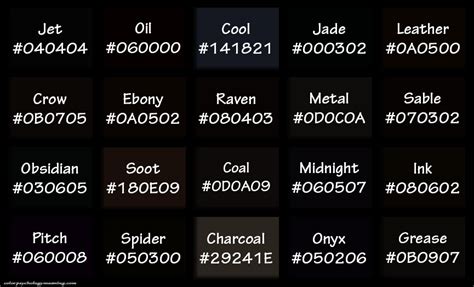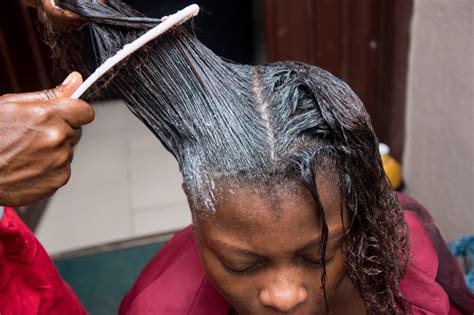Curly Hair Relaxers: The Ultimate Guide to Transforming Your Tresses
Introduction

Curly hair, a captivating crown that adorns the heads of many, can be a source of both joy and frustration. While its voluminous coils and vibrant texture add a touch of allure, maintaining its health and achieving desired styles can prove to be a time-consuming and complex endeavor. Enter curly hair relaxers, a revolutionary solution that has transformed the haircare landscape for countless individuals.
Chapter 1: Unlocking the Secrets of Curly Hair Relaxers
1. Understanding the Science Behind Relaxers
Curly hair relaxers work by altering the hair’s chemical structure, breaking down the disulfide bonds that give curls their shape. This process, known as chemical straightening, results in straighter and more manageable hair.
2. Types of Relaxers
Various types of relaxers are available, each catering to specific hair types and desired results.
- Sodium hydroxide (lye) relaxers: These are the most powerful and effective relaxers, providing long-lasting results. However, they can also be harsh on hair, potentially leading to damage.
- Potassium hydroxide relaxers: Milder than sodium hydroxide relaxers, they offer a more gradual straightening effect with less risk of damage.
- No-lye relaxers: Formulated without lye, these relaxers are gentler on hair and minimize the likelihood of breakage or chemical burns.
Chapter 2: Weighing the Benefits and Risks
3. Benefits of Using Curly Hair Relaxers
- Straightening: Relaxers provide a quick and effective way to transform curly hair into straight or manageable waves.
- Convenience: Relaxed hair requires less time and effort to style, making it an ideal solution for those with busy schedules.
- Versatile styling: Relaxed hair can be styled in a variety of ways, including blowouts, curls, and braids.
4. Potential Risks Associated with Relaxers
- Chemical damage: Relaxers can damage hair if not used properly or if the wrong type is chosen for your hair type.
- Scalp irritation: Some relaxers can cause scalp irritation, especially if they come into contact with sensitive skin.
- Hair thinning: Repeated use of relaxers over a long period can lead to hair thinning and breakage.
Chapter 3: Making Informed Decisions
5. Choosing the Right Relaxer for Your Hair
Selecting the appropriate relaxer is crucial for achieving optimal results while minimizing the risk of damage.
- Hair type: Consider your hair’s texture, density, and porosity when choosing a relaxer.
- Desired results: Determine the level of straightening you want to achieve, whether it’s a drastic transformation or a subtle change.
- Professional consultation: Seek guidance from a licensed hairstylist who can assess your hair and recommend the best relaxer for your needs.
6. The Importance of Professional Application
Applying curly hair relaxers safely and effectively requires professional expertise.
- Precise application: Relaxers must be applied evenly and accurately to avoid uneven straightening or scalp irritation.
- Protective measures: Hair and scalp should be protected from chemical exposure using barrier creams and gloves.
- Monitoring and neutralizing: A stylist can monitor the straightening process and neutralize the relaxer once the desired results are achieved.
Chapter 4: Curly Hair Relaxer Aftermath
7. Post-Relaxer Care and Maintenance
Proper care is essential for maintaining healthy, relaxed hair.
- Moisturizing: Relaxed hair needs ample moisture to prevent dryness and breakage. Use hydrating shampoos, conditioners, and leave-in treatments.
- Protein treatments: Regular protein treatments help strengthen relaxed hair and prevent damage.
- Avoid over-processing: Limit the frequency of relaxer applications to avoid excessive chemical damage.
8. Long-Term Hair Care Considerations
- Regular trims: Trim split ends to prevent damage from spreading up the hair shaft.
- Protective hairstyles: Consider wearing protective hairstyles such as braids or buns to minimize friction and breakage.
- Listen to your hair: Pay attention to how your hair responds to relaxers and adjust your routine accordingly.
Chapter 5: Common Mistakes to Avoid
9. Misconceptions and Pitfalls
- Over-relaxing: Relaxing hair too often or incorrectly can lead to severe damage and breakage.
- Ignoring hair porosity: Using a relaxer that is too strong for your hair’s porosity can result in chemical burns.
- Improper application: Applying relaxers without professional guidance can cause uneven results and scalp irritation.
10. Empowerment and Informed Decisions
Making informed decisions about curly hair relaxers requires understanding the science behind them, weighing the benefits and risks, and choosing the right type and application method. By following these insights, you can embrace the transformative power of curly hair relaxers while protecting the health and beauty of your tresses.
Conclusion
Curly hair relaxers are a powerful tool for achieving desired hair styles and simplifying daily routines. However, it is crucial to approach their use with a comprehensive understanding of the potential benefits and risks. By carefully considering the factors outlined in this guide and seeking professional guidance, you can confidently transform your curly hair while ensuring its health and vitality.
